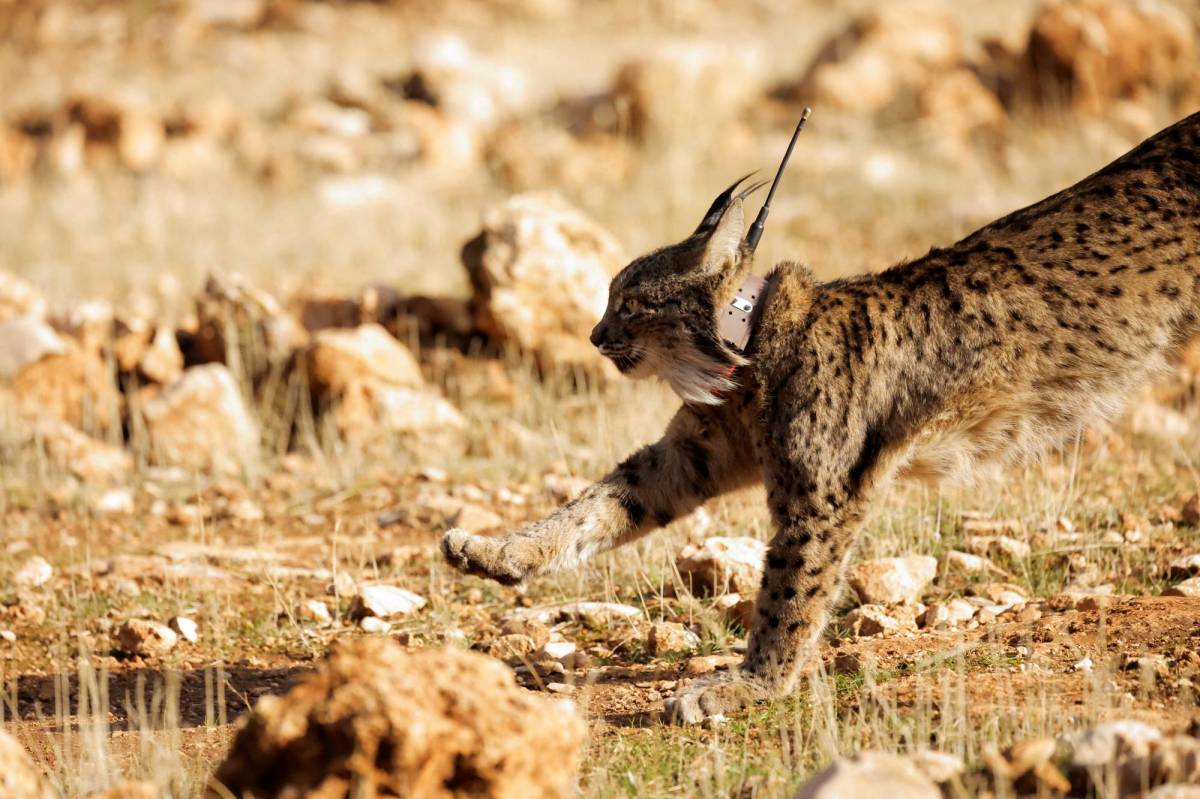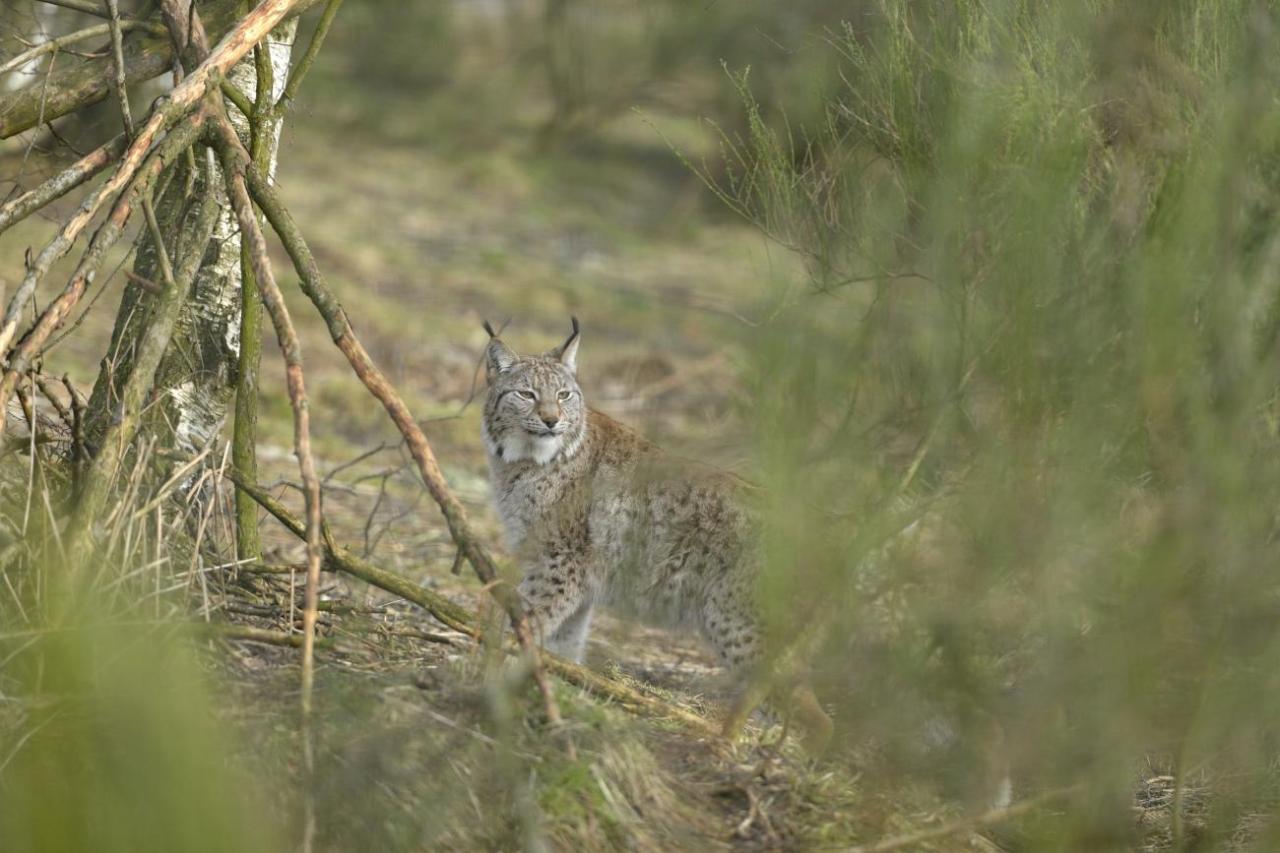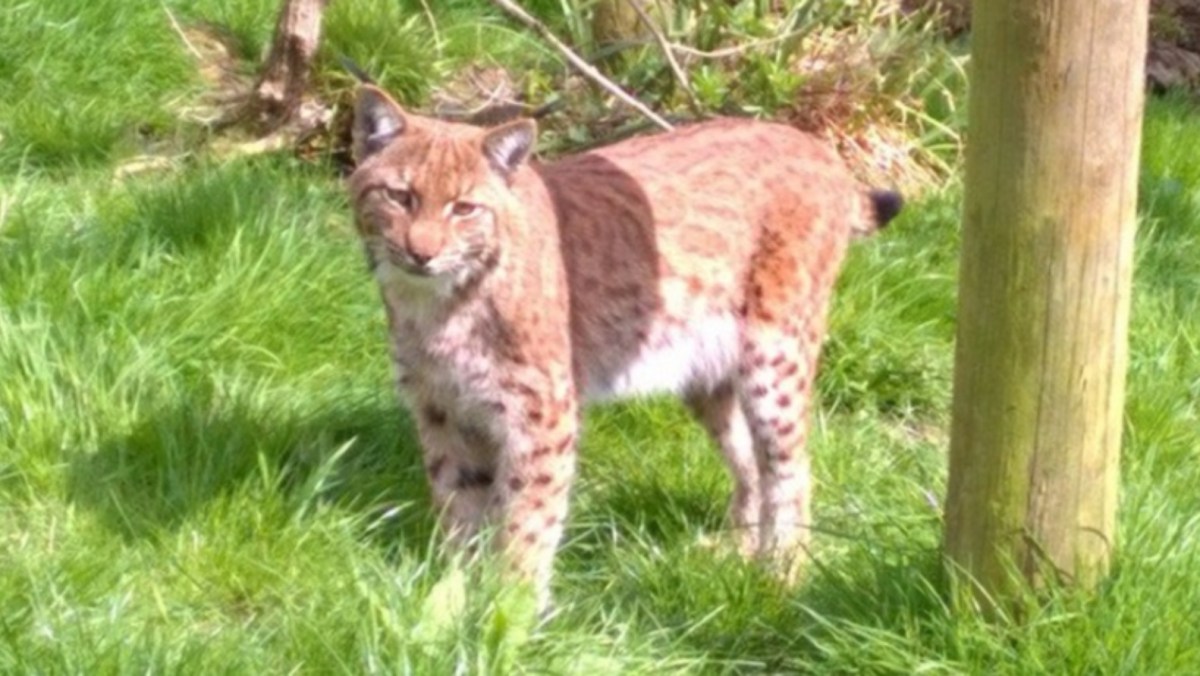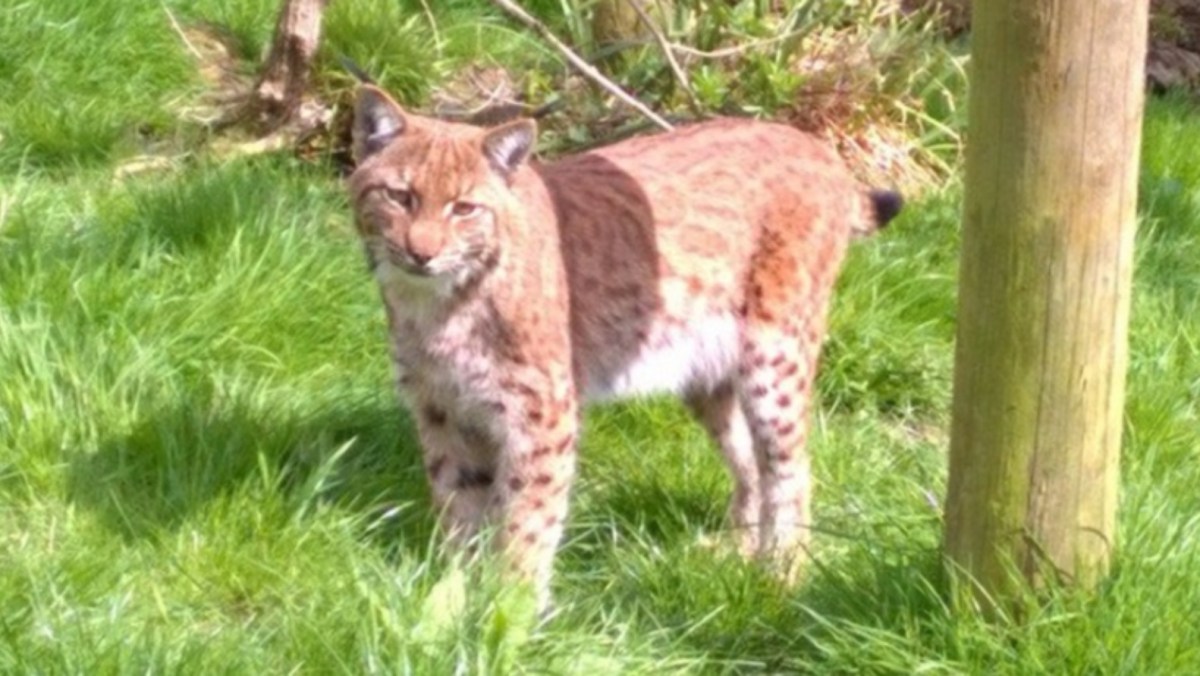Illegally released lynx captured – NatureScot statement – Illegally released lynx captured – NatureScot statement: A wild lynx, illegally released into the Scottish countryside, has been captured. NatureScot’s swift response highlights the serious implications of such actions, prompting questions about environmental impact, public safety, and the future of lynx conservation in Scotland. This incident underscores the complexities of wildlife reintroduction and the crucial role of responsible conservation practices.
This article delves into the details surrounding the capture, exploring NatureScot’s official response, the lynx’s characteristics and origin, the potential environmental consequences, public reaction, and the broader implications for conservation efforts. We’ll examine the legal repercussions, discuss potential mitigation strategies, and consider the challenges involved in safely relocating the animal. The story also looks at similar incidents globally, offering valuable lessons for future wildlife reintroduction programs.
So, the illegally released lynx are back in custody, thanks to NatureScot’s efforts. It’s a pretty serious situation, but hey, need a bit of a cheer-up? Check out this awesome giveaway: Three signed shirts up for grabs in bumper MyLFC giveaway. Hopefully, the focus will soon shift back to the important work of protecting Scotland’s wildlife after this exciting competition.
NatureScot’s Response to the Illegal Lynx Release
The illegal release of a lynx in Scotland sparked immediate action from NatureScot, Scotland’s nature agency. Their official statement detailed the ongoing investigation and the steps being taken to address the situation. This event highlights the complexities of wildlife reintroduction and the potential consequences of unauthorized actions.
NatureScot’s Official Statement and Actions
NatureScot’s statement condemned the illegal release, emphasizing the potential risks to both the lynx and the native ecosystem. They confirmed the commencement of an investigation to identify those responsible and pursue legal action. The agency is actively working to locate and capture the lynx, prioritizing the animal’s welfare and public safety. They are collaborating with other relevant agencies and experts to develop a safe and humane capture plan.
Timeline of Events
The timeline begins with the initial report of the lynx sighting, followed by NatureScot’s confirmation of the illegal release. Subsequent actions included the launch of the investigation, public announcements, and the ongoing efforts to capture the animal. The timeline concludes with the release of the official NatureScot statement, outlining the agency’s response and ongoing commitment to resolving the situation.
Legal Ramifications of the Illegal Release
NatureScot indicated that those responsible for the illegal release could face significant legal penalties under relevant wildlife legislation. These penalties could include substantial fines and even imprisonment, reflecting the severity of the offense and its potential environmental consequences. The exact legal ramifications will depend on the findings of the ongoing investigation.
The Released Lynx: Species, Origin, and Risks

Understanding the lynx itself is crucial to assessing the risks and developing effective management strategies. Details about its species, origin, and potential impact on the environment are vital pieces of this puzzle.
Description and Origin of the Lynx
While the exact species and age of the released lynx haven’t been definitively confirmed by NatureScot in their public statements, it’s likely a Eurasian lynx ( Lynx lynx) given its presence in Scotland. Its age and any unique identifying markings (scars, etc.) are still being investigated. Speculation about its origin points towards either an escape from captivity or a deliberate release from a private collection, though NatureScot’s investigation will determine the exact source.
Potential Risks to the Environment and Human Populations
The introduction of a lynx into an unprepared ecosystem poses several risks. Predation on native wildlife, competition for resources, and the potential for disease transmission are key concerns. While Eurasian lynxes are generally not considered a major threat to humans, the possibility of encounters and potential defensive actions by the animal cannot be ruled out. This necessitates careful monitoring and a cautious approach to capture.
Challenges of Capturing and Relocating the Lynx
Capturing and relocating a wild lynx safely and humanely presents significant challenges. The animal’s size, strength, and elusive nature require specialized expertise and equipment. The process needs to minimize stress and injury to the animal while ensuring the safety of personnel involved. Relocation would also necessitate finding a suitable habitat outside of Scotland, potentially involving international cooperation.
Environmental Impact of the Illegal Release
Introducing a predator into a previously lynx-free ecosystem has far-reaching consequences. Assessing the potential ecological disruption is crucial for mitigation efforts.
So, that illegally released lynx? NatureScot’s statement is pretty serious. It’s a reminder that even seemingly unrelated events have ripple effects; for instance, consider how much disruption a faculty strike can cause, like the one averted at Ontario colleges, as you can read here: Faculty strike averted at Ontario colleges as both sides agree to. The point is, responsible actions, whether protecting wildlife or negotiating contracts, prevent bigger problems down the line, just like the successful capture of that lynx.
Ecological Consequences and Comparisons
The ecological consequences of introducing a lynx could include significant impacts on prey populations (e.g., rabbits, deer). This could trigger cascading effects throughout the food web. Comparisons with similar instances of illegally released animals globally, particularly those involving large predators, highlight the potential for long-term disruption. The lack of established predator-prey relationships in the area could lead to imbalances.
Hypothetical Long-Term Effects on Native Wildlife
A hypothetical scenario might involve a decline in certain prey species, potentially leading to increased competition among remaining native predators. Conversely, some species might thrive due to reduced competition from other prey animals. The long-term effects are difficult to predict precisely, but careful monitoring is essential.
Mitigation Strategies
| Strategy | Description | Potential Benefits | Potential Drawbacks |
|---|---|---|---|
| Capture and Relocation | Capture the lynx and transport it to a suitable habitat elsewhere. | Removes the immediate threat to the native ecosystem. | Difficult and potentially stressful for the animal; requires finding a suitable location. |
| Habitat Management | Alter the habitat to make it less suitable for the lynx. | Could deter the lynx from establishing itself. | May not be effective; could have unintended consequences for other species. |
| Monitoring and Research | Closely monitor the lynx’s behavior and impact on the ecosystem. | Provides valuable data for informing future management decisions. | Requires significant resources and expertise. |
| Public Education | Educate the public about the risks of illegal wildlife releases. | Raises awareness and discourages future incidents. | May not reach all relevant audiences. |
Public Perception and Reaction to the Event
The news of the illegal lynx release generated a wide range of public reactions, highlighting the diverse perspectives surrounding conservation and wildlife management.
Public Reactions and Social Media’s Role

Initial reactions ranged from excitement and curiosity to concern and anger. Social media played a significant role in disseminating information and shaping public opinion, with various groups sharing their viewpoints and opinions. News outlets reported on both positive and negative reactions from local communities and conservation groups.
Diverse Public Viewpoints

Conservationists expressed concerns about the potential ecological impact, while some locals voiced fears about the lynx’s presence. Authorities focused on the legal ramifications and the need to capture the animal safely. The media’s portrayal varied, with some emphasizing the novelty of the situation and others highlighting the potential risks.
Conservation Implications and Future Reintroduction Efforts
This incident underscores the challenges of reintroducing endangered species and the importance of following established protocols.
Broader Implications for Lynx Conservation
The illegal release casts a shadow on future lynx reintroduction efforts in Scotland. It highlights the need for rigorous planning, public engagement, and robust regulatory frameworks to ensure the success and safety of such projects. The incident may also lead to increased scrutiny of existing regulations and practices.
Challenges of Reintroducing Endangered Species
- Careful selection of release sites.
- Pre-release acclimatization of animals.
- Ongoing monitoring and management post-release.
- Public education and engagement.
- Collaboration among various stakeholders.
Comparison to Other Illegal Wildlife Releases, Illegally released lynx captured – NatureScot statement
Similar incidents globally, such as the release of other large predators or invasive species, highlight the potential for unforeseen consequences. These cases emphasize the need for stricter regulations and greater international cooperation to prevent future illegal releases.
Illustrative Depiction of the Lynx’s Habitat
Imagine the lynx moving through a dense Caledonian pine forest. The terrain is uneven, with rocky outcrops and patches of bogland. The undergrowth is thick with heather and bilberry, offering cover from predators and prey alike. Red deer, its primary prey, graze in nearby clearings, providing a potential food source. The forest provides both shelter and hunting grounds, but also presents challenges such as the need to navigate difficult terrain and the potential for human encounters.
Habitat Suitability and Ecosystem Dynamics
The suitability of the habitat is mixed. The forest offers ample cover and prey, but the presence of humans and potential conflicts with livestock could pose risks. The lynx’s presence could alter the existing ecosystem dynamics, potentially impacting the populations of various species. Long-term monitoring will be crucial to assess these changes.
Last Point: Illegally Released Lynx Captured – NatureScot Statement
The illegal release of the lynx serves as a stark reminder of the delicate balance within ecosystems and the potential unforeseen consequences of human intervention. NatureScot’s response, while decisive, highlights the challenges involved in managing such situations. The incident sparks important conversations about responsible wildlife management, the need for robust protocols in reintroduction programs, and the critical role of public awareness in conservation efforts.
So, the illegally released lynx were caught – NatureScot’s statement was pretty firm on that. It reminds me of how teamwork is key, like what you see with Brind’Amour and Berube’s shared work ethic leading the Hurricanes, as described in this article: Brind’Amour, Berube share common work ethic leading Hurricanes. A coordinated effort, just like the successful recapture of those lynx shows.
Hopefully, this situation highlights the importance of responsible wildlife management.
The ongoing investigation and the lynx’s future remain important focal points, emphasizing the need for careful consideration of all aspects of wildlife conservation.
General Inquiries
What species of lynx was released?
The provided Artikel doesn’t specify the exact lynx species. Further information from NatureScot would be needed.
What are the potential long-term effects on the local ecosystem?
Long-term effects could include disruption of the food chain, competition with native species, and potential spread of disease. A thorough ecological assessment is needed to determine the full impact.
Will the lynx be released back into the wild?
That decision depends on various factors, including the lynx’s health, the suitability of potential habitats, and any potential risks to the ecosystem and human populations. NatureScot will likely make this determination.
What penalties could the person responsible face?
The penalties could range from fines to imprisonment, depending on the severity of the offense and the legal framework in Scotland. NatureScot’s statement should detail the potential legal ramifications.
